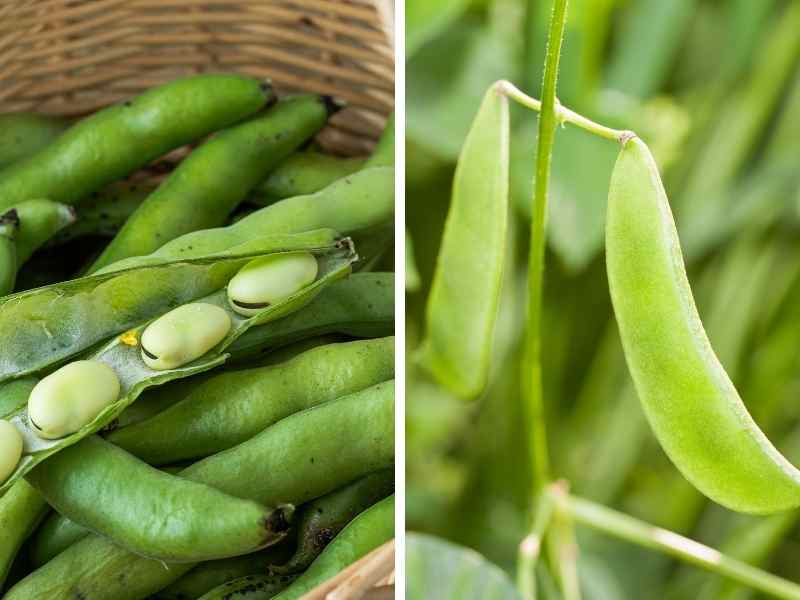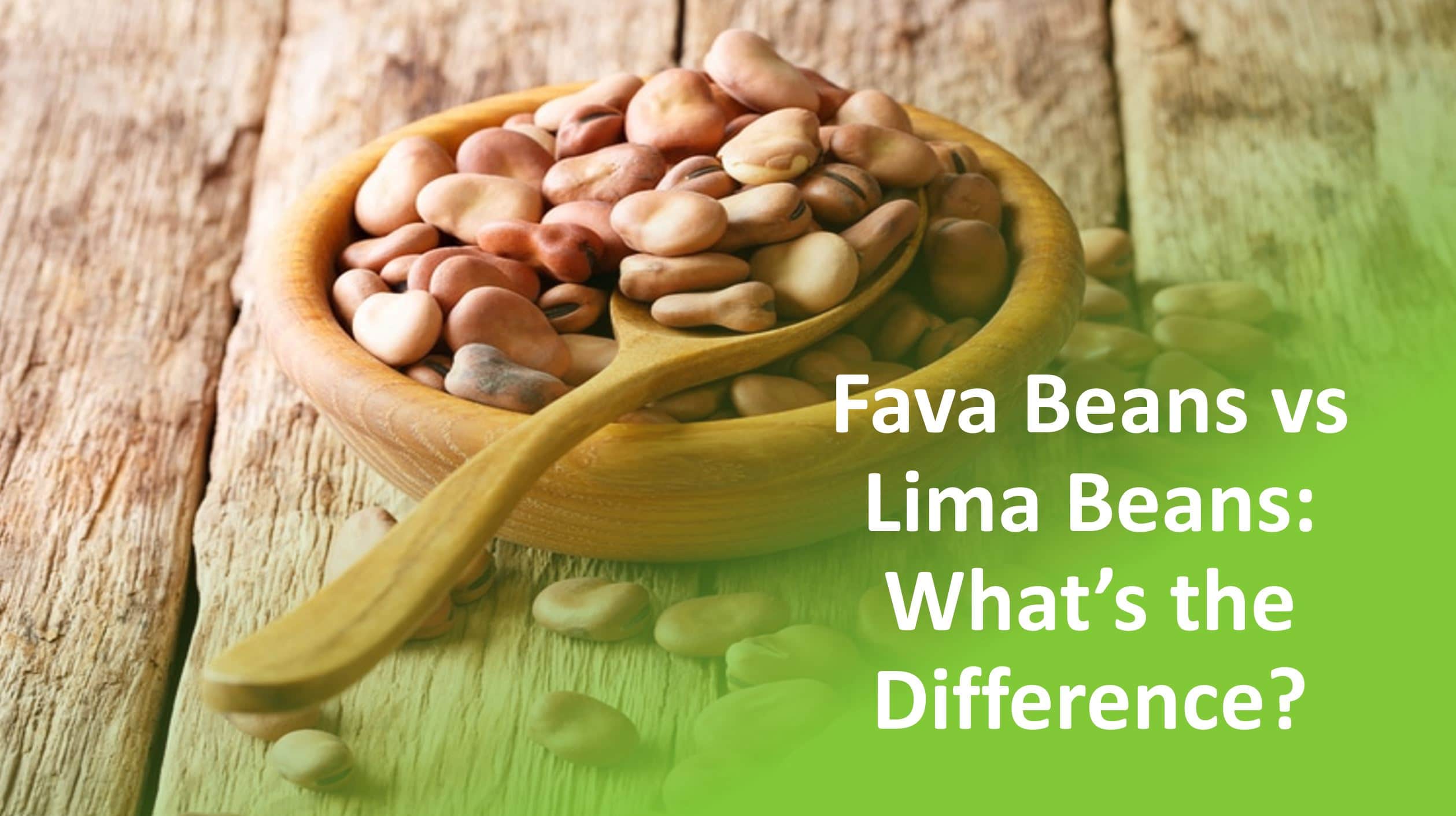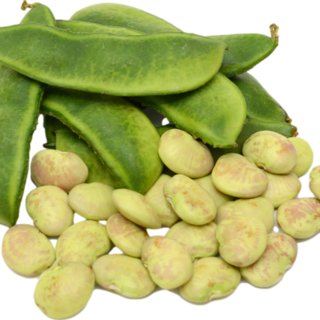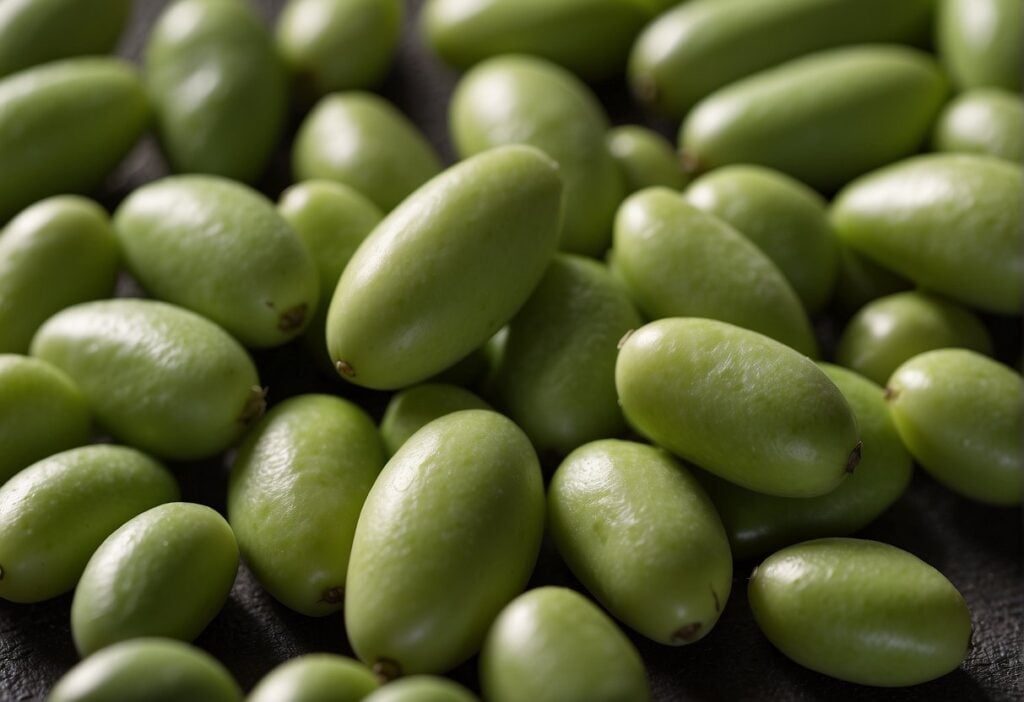Introduction

Lima Beans vs Fava Beans: Legumes Showdown
In the world of legumes, Lima Beans and Fava Beans take the spotlight in this ultimate comparison. These versatile legumes not only add flavor and texture to various dishes but also provide an array of nutritional benefits. Whether you’re a fan of the creamy and buttery Lima Beans or the earthy and nutty Fava Beans, understanding their origins, health benefits, and culinary uses will help you make an informed choice for your next meal. Let’s dig in and explore the distinct characteristics and delicious possibilities that await in this legume showdown.
Overview Of Lima Beans And Fava Beans
Lima beans and fava beans are both popular legumes known for their unique flavors and nutritional benefits. Lima beans, also known as butter beans, are small, creamy white or pale green in color with a buttery texture and a slightly sweet taste. Fava beans, on the other hand, are large, flat beans with a green outer shell and a firm texture. They have a nutty and earthy flavor. Both beans are packed with essential nutrients like protein, fiber, vitamins, and minerals, making them a nutritious addition to any diet.
Nutritional Benefits Of Legumes
Legumes, including lima beans and fava beans, offer numerous nutritional benefits. They are an excellent source of plant-based protein, making them a valuable addition for vegetarians and vegans. Additionally, they are high in dietary fiber, which promotes digestive health and helps with weight management. Legumes are also rich in complex carbohydrates and low in fat, making them a healthy option for those looking to maintain a balanced diet. Furthermore, they contain essential vitamins and minerals such as iron, magnesium, and folate, which support overall health and well-being. Including legumes in your diet can provide a range of nutrients and contribute to a healthy lifestyle.
Lima Beans

Lima beans, also known as butter beans, are a type of legume that belong to the Fabaceae family. These beans are native to Central and South America but are now cultivated and consumed worldwide. Lima beans are characterized by their creamy texture and slightly nutty flavor. They are available in different sizes and colors, including white, green, and speckled varieties. Lima beans are highly nutritious and packed with protein, dietary fiber, vitamins, and minerals. They are a versatile ingredient and can be used in various dishes such as soups, stews, salads, and side dishes. Including lima beans in your diet can provide a range of health benefits and contribute to a well-rounded, nutritious meal.
Lima Beans: Origin And Appearance
Lima beans, also known as butter beans, have a fascinating origin and unique appearance. These legumes are native to Central and South America and have been cultivated for thousands of years. Today, they are grown in various countries worldwide. Lima beans are characterized by their large, flat, and kidney-shaped seeds. They come in different colors, including white, green, and speckled varieties. These beans have a smooth, creamy texture and are often used in soups, stews, and side dishes. Including Lima beans in your meals adds a delightful pop of color and taste.
Health Benefits Of Consuming Lima Beans
Lima beans offer numerous health benefits that make them a valuable addition to any diet. These legumes are packed with essential nutrients, including protein, fiber, vitamins, and minerals. Their high fiber content promotes healthy digestion and can aid in weight management. Lima beans are also rich in antioxidants, which have been linked to reducing the risk of chronic diseases, such as heart disease and certain types of cancer. Additionally, these beans provide a good source of iron, magnesium, and folate, which are essential for energy production and maintaining healthy blood cells. Including Lima beans in your meals can contribute to overall wellbeing and support a balanced diet.
Fava Beans

Fava beans, also known as broad beans, are a type of legume that has been cultivated for thousands of years. They are larger and flatter than lima beans and have a distinctive creamy texture. Fava beans have a lightly grassy and nutty flavor similar to chickpeas, with a slightly sweet taste that makes them versatile in various dishes. These beans are often used in Mediterranean and Middle Eastern cuisine, and can be enjoyed in salads, stews, dips, and even as a standalone side dish. Fava beans are not only delicious, but they also offer a range of health benefits, making them a nutritious addition to your diet.
Fava Beans: Origin And Appearance
Fava beans, also known as broad beans, have been cultivated for thousands of years and are believed to have originated in the Mediterranean and Middle Eastern regions. These beans are larger and flatter than lima beans, with a length of about 1-2 inches. Fava beans have a distinctive appearance, with a tough outer shell that needs to be removed before consumption. Inside the shell, the beans have a creamy color and a smooth texture. The leaves of the fava bean plant are broad and green, adding to their visual appeal. Fava beans are a versatile and nutritious addition to various dishes.
Health Benefits Of Consuming Fava Beans
Fava beans offer numerous health benefits due to their nutrient-rich profile. They are an excellent source of protein, providing a significant amount of amino acids necessary for muscle growth and repair. Fava beans are also high in dietary fiber, which aids in digestion and promotes a healthy gut. These beans are packed with essential minerals such as potassium, magnesium, and iron, which are vital for maintaining proper bodily functions. Additionally, fava beans are rich in folate, a B-vitamin that supports cell growth and development. Incorporating fava beans into your diet can contribute to improved heart health, increased energy levels, and enhanced overall well-being. With their numerous health benefits, fava beans are an excellent addition to a balanced diet.
Taste And Texture Comparison

Lima beans and fava beans have distinct taste profiles and textures. Lima beans have a slightly nutty and buttery flavor, with a creamy and soft texture. On the other hand, fava beans have a milder and earthier taste, with a smoother and firmer texture. The thinner skin of fava beans contributes to their smoother texture when cooked, while the thicker skin of lima beans gives them a heartier bite. Both beans absorb flavors well, making them versatile ingredients in various dishes. Whether you prefer a creamy and soft texture or a firmer bite, both beans offer unique taste experiences.
Taste Profile Of Lima Beans
Lima beans have a distinct taste profile that sets them apart from other legumes. They offer a mild and slightly sweet flavor that is less intense compared to fava beans. The taste of lima beans can be described as subtly nutty, with a hint of earthiness. This makes them a versatile ingredient that can complement various dishes without overpowering the palate. Lima beans absorb flavors well, making them perfect for soups, stews, and side dishes. They add a unique and delicate taste that adds depth to your culinary creations.
Taste Profile Of Fava Beans
Fava beans have a distinct taste profile that sets them apart from other legumes. They offer a lightly grassy and nutty flavor with a hint of sweetness. Fava beans have a more pronounced earthy taste compared to lima beans. Their creamy texture and delicate flavor make them a versatile ingredient in various dishes. Fava beans can be used in salads, purees, and even as a protein substitute in vegetarian recipes. They absorb flavors well and add a unique depth to the dishes they are incorporated in. Overall, fava beans provide a delightful and satisfying dining experience.
Culinary Uses And Recipes

Fava beans and lima beans each have their own unique culinary uses and are versatile ingredients in various dishes. Fava beans are commonly used in Italian and North African cuisine, where they are incorporated into salads, stews, and pasta dishes. They can also be mashed into a smooth puree or added to dips. Lima beans, on the other hand, are popular in South American and Caribbean cuisine. They are often used in soups, stews, and side dishes. Lima beans can be cooked and seasoned with herbs and spices, or added to rice and vegetable dishes for added texture and flavor. Both beans can be enjoyed in a variety of recipes, providing a nutritious and delicious addition to any meal.
Popular Dishes And Recipes With Lima Beans
Lima beans are versatile legumes that can be used in a variety of delicious dishes. They are commonly used in soups, stews, and salads, adding a hearty and nutritious element to the meal. Lima beans are also popular in vegetarian and vegan dishes, often used as a protein-rich substitute for meat. One popular recipe is Lima Bean Curry, where the beans are cooked in a flavorful blend of spices and served over rice. Lima beans can also be mashed into a creamy dip or added to pasta dishes for a satisfying and nutritious twist.
Popular Dishes And Recipes With Fava Beans
Fava beans are a versatile ingredient used in a variety of popular dishes. One famous dish is Ful Medames, a traditional Egyptian breakfast made with boiled fava beans, seasoned with garlic, lemon juice, and olive oil. Another popular dish is Fava Bean Dip, where the beans are blended with tahini, lemon juice, and spices to create a creamy and flavorful dip. Fava beans are also commonly added to salads, pasta dishes, and stews, adding a nutritious and hearty element to the meal. Their buttery texture and earthy flavor make them a delicious addition to any recipe.
Conclusion

In conclusion, Lima beans and Fava beans may seem similar, but they have distinct differences in taste, texture, and culinary uses. Lima beans have a milder flavor and creamy texture, making them suitable for a wide range of recipes such as soups, stews, and salads. On the other hand, Fava beans have a slightly nutty flavor and firm texture, commonly used in Mediterranean and Middle Eastern dishes. Both legumes offer numerous health benefits, being excellent sources of fiber, protein, and essential nutrients. Choosing between Lima beans and Fava beans depends on personal preferences and the specific dish being prepared.
Key Differences Between Lima Beans And Fava Beans
Lima beans and fava beans may seem similar, but they have distinct differences. Lima beans have a milder starchy flavor, while fava beans have an earthy nutty taste with a hint of cheese. Fava beans are generally larger in size and have a thicker skin and lighter color compared to lima beans. Moreover, fava beans tend to be more expensive than lima beans. These differences in taste, size, and appearance make lima beans and fava beans unique in their culinary uses and preferences. So, when choosing between the two, consider your personal preferences and the specific dish you are preparing.
Choosing The Right Legume For Your Dietary Needs
When it comes to choosing between lima beans and fava beans, it ultimately boils down to your personal dietary needs and preferences. If you are looking for a milder flavor and creamier texture, lima beans are a great choice. They are also rich in protein and fiber, making them a nutritious option. On the other hand, if you prefer an earthy and nutty taste with a hint of cheese, fava beans are the way to go. They are larger in size and have a thicker skin, providing a unique culinary experience. So, consider your taste preferences and the specific dish you are preparing to make the right choice between these versatile legumes.
FAQ About Lima Beans vs. Fava Beans
Q: What are Lima beans and Fava beans?
A: Lima and Fava beans are both legumes and belong to the same family called Fabaceae. Lima beans are small, flat beans with a creamy texture, while Fava beans are larger and have a buttery, nutty flavor.
Q: What are the main differences between Lima beans and Fava beans?
A: The main differences lie in their size, taste, and texture. Lima beans are smaller and have a smoother, creamy texture with a slightly nutty taste. On the other hand, Fava beans are larger and have a firmer texture with a buttery, earthy flavor.
Q: How are Lima beans and Fava beans used in cooking?
A: Lima beans are commonly used in stews, soups, and side dishes. They can be cooked until tender and added to various recipes. Fava beans, on the other hand, are versatile and can be used in a variety of dishes such as salads, pasta, spreads, and even mashed into a dip.
Q: Are Lima beans and Fava beans nutritious?
A: Yes, both Lima beans and Fava beans are highly nutritious. They are rich in protein, dietary fiber, vitamins, and minerals. They are also low in fat and cholesterol, making them a healthy addition to any diet.
Q: Can Lima beans and Fava beans be used interchangeably in recipes?
A: While both beans can be used in various dishes, they have distinct flavors and textures. It is best to use them according to your recipe’s requirements. Lima beans work well in lighter dishes, while Fava beans provide a heartier and more robust flavor.
Q: How do I prepare Lima beans and Fava beans for cooking?
A: Both Lima and Fava beans need to be shelled before cooking. Lima beans can be blanched in boiling water for a few minutes to remove their skins. Fava beans, however, require an additional step of removing the skins after blanching by squeezing the beans gently.
Q: Are there any considerations or precautions when cooking or consuming Lima beans and Fava beans?
A: Yes, it is important to note that some people may have allergies to legumes, including Lima and Fava beans. Always be cautious if you or someone you’re cooking for has legume allergies. Additionally, if you are using dried Fava beans, it is recommended to soak and cook them thoroughly to remove potentially toxic compounds.
Q: Where can I find Lima beans and Fava beans?
A: Both Lima beans and Fava beans are commonly found in grocery stores, especially during their respective growing seasons. They can be purchased fresh, frozen, or dried, depending on your preference and availability.
Q: Can Lima beans and Fava beans be frozen for later use?
A: Yes, both Lima beans and Fava beans can be frozen for later use. Simply blanch them for a few minutes, cool them quickly in an ice bath, and then package them in airtight containers or freezer bags before placing them in the freezer. This way, they can be stored for several months.
Q: Can I grow Lima beans and Fava beans in my home garden?
A: Yes, both Lima beans and Fava beans can be grown in home gardens. However, keep in mind that they require a longer growing season and warm temperatures. Check with your local gardening resources for specific growing instructions and suitable cultivars for your area.

Kemah Cafe is a family-owned eatery that takes pride in offering a delightful array of Vietnamese, Chinese, and Thai dishes. Located at the heart of the community, Kemah Cafe has been serving up delicious Pho and other authentic Asian cuisine for many years. Founded with a passion for sharing the flavors of the East, Kemah Cafe has become a beloved culinary destination for locals and visitors alike. The warm and welcoming atmosphere of the cafe, combined with the tantalizing aromas of freshly prepared dishes, creates an unforgettable dining experience.